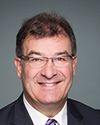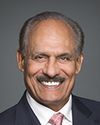Thank you for your question.
I will answer it in English.
In terms of examples, often there are women's committees in camps. We'll work to bring together all of the women to have a women's committee. In those committees, they'll talk about a lot of things.
In DRC we have these committees. They'll come together and talk about structures that are preventing them from accessing all kinds of things. They may talk about gender-based violence. They may even report it. Even if they don't, as I was saying in another meeting the other day, they're in a setting where they don't have therapists who are helping and giving counselling after gender-based violence. They don't have anti-depressants. They just have their sisters in an NGO meeting, and sometimes that's what they need. That kind of programming does make a difference on the ground. It is important programming.
That's one set of things. Generally women's rights organizations, when it comes to....
Another study showed why there was a reduction in violence in countries. The number one indicator of lower gender-based violence in a country is not legislation. It's not policing and security. It's the presence of a strong women's rights movement and strong women's rights organizations in the country. Supporting that kind of organization does make a difference in some of these issues.
I think the most important thing is to talk to the women, which often is not something that happens. As I was saying earlier, where are their toilets located? What do they need? You don't know unless you ask them, and traditionally women often aren't asked. They're very straightforward pieces, those kinds of things.
Another one would be providing the kind of guidelines that have been created, UN guidelines, to be able to make those real and to provide that training. Those are not for gender advisers. They're not for health practitioners. They're for average humanitarian workers and those who are providing those services. It can give them ideas about how to see what some of the issues are for women.
Another area would be referral systems in a camp. When you come to a camp, you're told where the latrines are, that the food is delivered on Tuesday, Wednesday, and Thursday at such and such a time, and so on. We consider those basic needs, but we don't often talk about where the reproductive health services are, or where you can go if you've been raped. Those sorts of referrals aren't considered basic enough to be given through basic referral systems.
It's not hard stuff, really.





